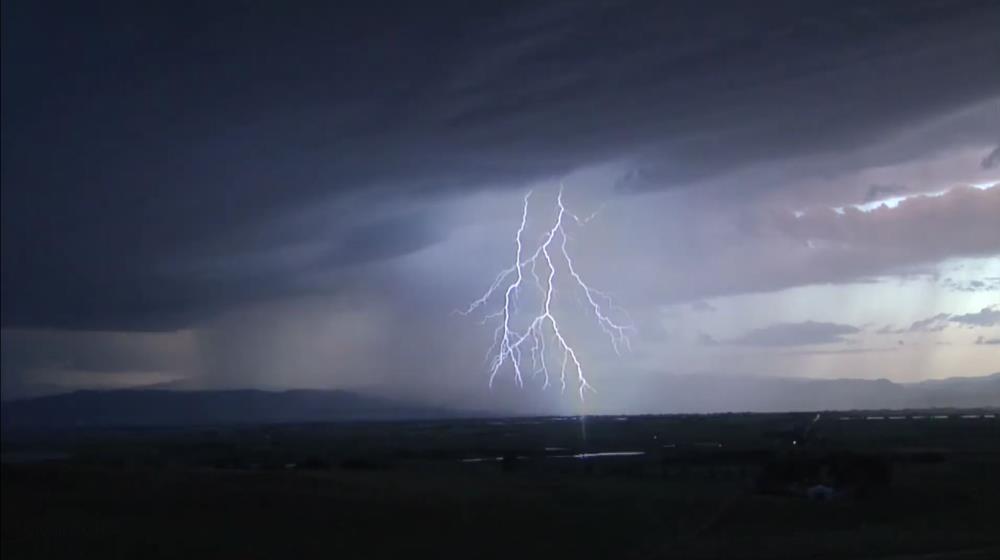
Related items loading ...
Section 1: Publication
Publication Type
Conference Poster
Authorship
Ruman Caio, Thériault Julie
Title
Investigation of wet snow events leading to power outages over New Brunswick using convection-permitting simulations
Year
2022
Publication Outlet
AOSM2022
DOI
ISBN
ISSN
Citation
Caio Ruman, Julie Thériault (2022). Investigation of wet snow events leading to power outages over New Brunswick using convection-permitting simulations. Proceedings of the GWF Annual Open Science Meeting, May 16-18, 2022.
Abstract
Snowstorms are a common occurrence in Atlantic Canada, often causing damage to infrastructure and power outages. However, not all intense snow events cause power outages. When those events occur near 0°C temperatures, a mix of precipitation often occurs, including wet snow. Wet snow is heavier, and when associated with moderate wind speeds, leads to increased accretion, making the fall of trees and power lines more likely. This work investigates why only some events cause power outages and what is the role of wet snow as a factor behind the power outages over New Brunswick, and how well the CONUS-WRF simulations represent those events. CONUS-WRF is a high-resolution, convection-permitting simulation with 4 km horizontal resolution starting in October 2000 and running until September 2013, encompassing the continental US and Southern Canada. The preliminary analysis defines wet snow as snow precipitation that occurred when the 2-m temperature was higher than -4°C. From a list of power outage events supplied by Énergie NB Power, we investigated those events using the CONUS-WRF simulations and the observation data from selected stations in New Brunswick from Environment and Climate Change Canada. A total of 42 winter storms that caused power outages were verified, with 26 associated with wet snow. Of the 42 storms, 31 were well simulated, being able to reproduce the occurrence of precipitation and the near 0°C temperatures. Up to 22 wet snowstorms are included in the 31 well-simulated storms and 64% had wind greater than 8 m/s. The wind in 15 of those 31 storms showed a negative bias, with most of those occurrences in the southern cities of New Brunswick, Moncton, and Saint John. Next, daily snow data was used to define a threshold for the intensity of extreme snow events over New Brunswick. The threshold ranged from 18-22 cm, with higher values in the center of New Brunswick, from central (Fredericton) to the Northeast coast. These were used to develop a spatial distribution of the monthly and yearly number of snow events over the region. On average, for the 2000-2013 period and for events lasting at least 2 days, the northern region of New Brunswick had 8 to 12 snow events a year, while the southern region has between 3 and 6 snow events. Overall, this study will help to better understand the atmospheric conditions associated with snowstorms leading to long power outages over New Brunswick.
Plain Language Summary
It aligns with the water-related risk reduction goals. We are studying how certain types of snowstorms impact the infrastructure and causes power outages.
Section 2: Additional Information
Program Affiliations
Project Affiliations
Submitters
|
Caio Ruman | Submitter/Presenter | caioruman@gmail.com | UQAM |
Publication Stage
N/A
Theme
Hydrometeorology, Atmosphere and Extremes
Presentation Format
poster plus 2-minute lightning talk
Additional Information
AOSM2022 First Author: Caio Ruman, Université du Québec à Montreal Additional Authors: Julie Thériault, Université du Québec à Montreal


 GWFNet
GWFNet Master
Master Data
Data Research
Research Map
Map
 Advanced
Advanced . . .
. . .

 Metadata Editor
Metadata Editor
 Record List
Record List
 Alias List Editor
Alias List Editor
 Legacy sites
Legacy sites